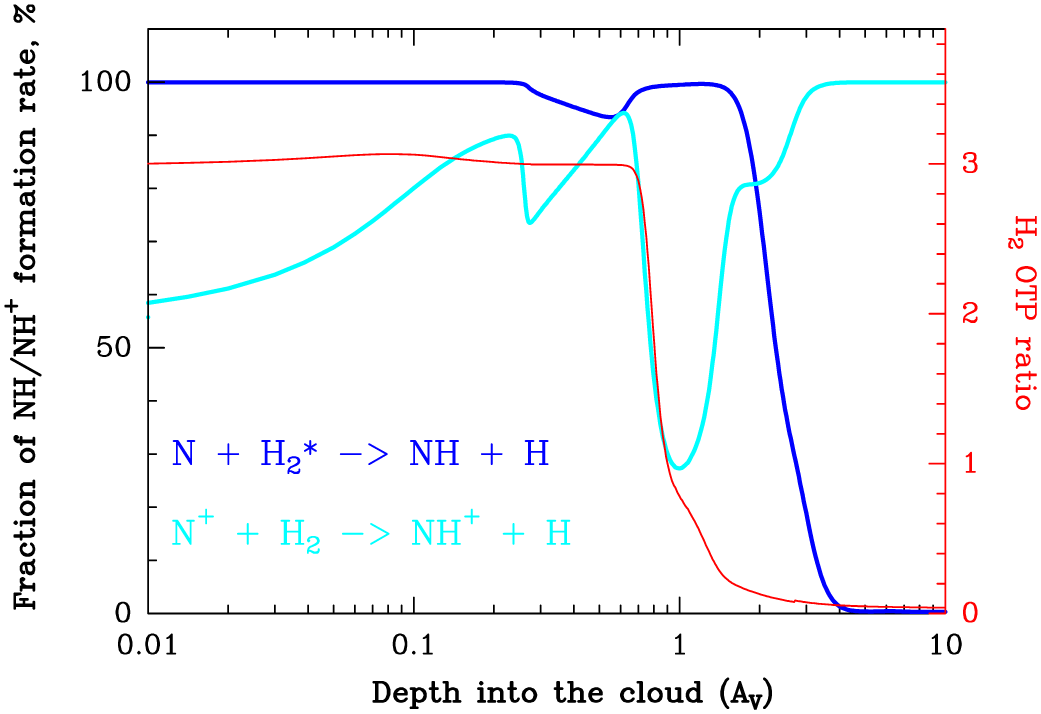Authors: Goicoechea, Javier R.; Roncero, Octavio
Journal: ASTRONOMY & ASTROPHYSICS
Publication date: 2022/08/31
DOI: 10.1051/0004-6361/202243884
Abstract: The formation of hydrides by gas-phase reactions between H-2 and a heavy element atom is a very selective process. Reactions with ground-state neutral carbon, oxygen, nitrogen, and sulfur atoms are very endoergic and have high energy barriers because the H-2 molecule has to be fragmented before a hydride bond is formed. In cold interstellar clouds, these barriers exclude the formation of CH, OH, NH, and SH radicals through hydrogen abstraction reactions. Here we study a very energetically unfavorable process, the reaction of N (S-4) atoms with H-2 molecules. We calculated the reaction rate coefficient for H-2 in different vibrational levels, using quantum methods for v = 0-7 and quasi-classical methods up to v = 12; for comparison purposes, we also calculated the rate coefficients of the analogous reaction S (P-3)+H-2(v) -> SH + H. Owing to the high energy barrier, these rate coefficients increase with v and also with the gas temperature. We implemented the new rates in the Meudon photodissociation region (PDR) code and studied their effect on models with different ultraviolet (UV) illumination conditions. In strongly UV-irradiated dense gas (Orion Bar conditions), the presence of H 2 in highly vibrationally excited levels (v >= 7) enhances the NH abundance by two orders of magnitude (at the PDR surface) compared to models that use the thermal rate coefficient for reaction N(S-4) + H-2 -> NH + H. The increase in NH column density, N(NH), across the PDR is a factor of similar to 25. We investigate the excitation and detectability of submillimeter NH rotational emission lines. Being a hydride, NH excitation is very subthermal (T-rot << T-k) even in warm and dense gas. We explore existing Herschel/HIFI observations of the Orion Bar and Horsehead PDRs. We report a 3 sigma emission feature at the similar to 974 GHz frequency of the NH N-J = 1(2) – 0(1) line toward the Bar. The emission level implies N(NH) similar or equal to 10(13) cm(-2), which is consistent with PDR models using the new rate coefficients for reactions between N and UV-pumped H-2, This formation route dominates over hydrogenation reactions involving the less abundant N+ ion. JWST observations will quantify the amount and reactivity of UV-pumped H-2 in many interstellar and circumstellar environments.


